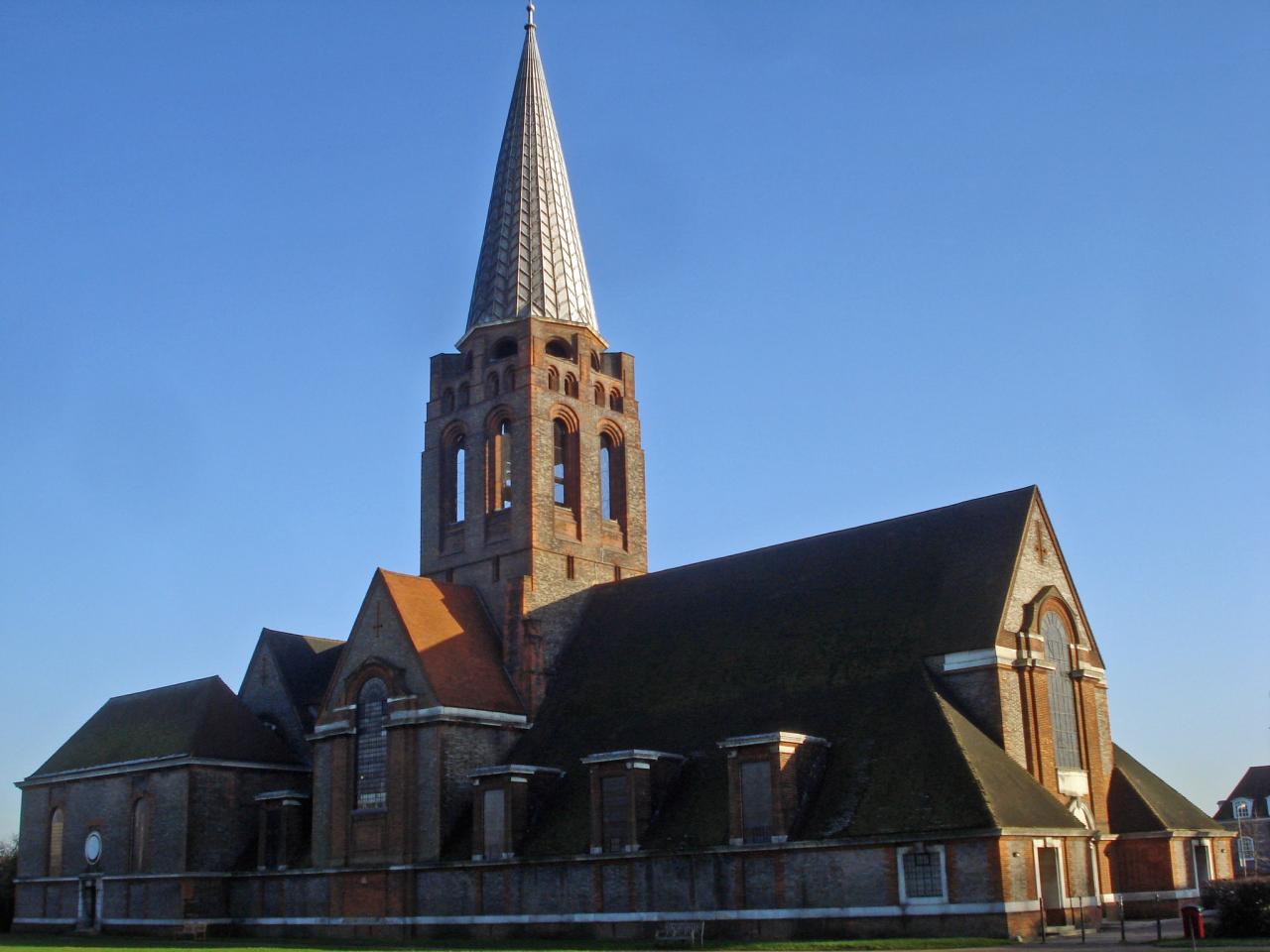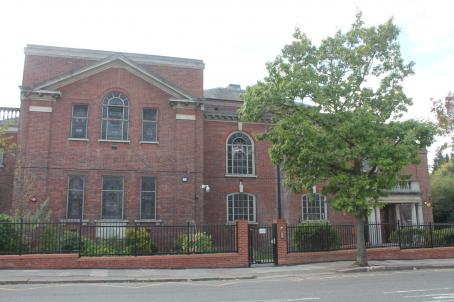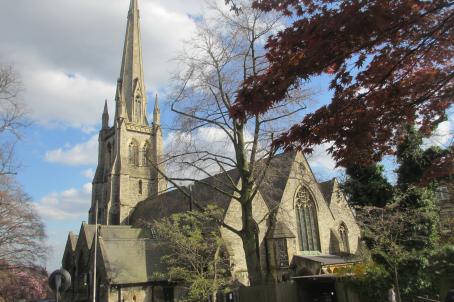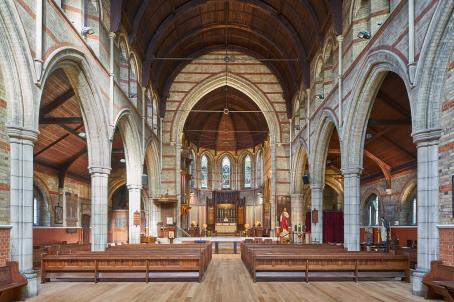St Jude-onthe-Hill, Hampstead Garden Suburb
The church was built to the designs of Edwin Lutyens (1869-1944) widely acknowledged to be the greatest English architect of the 20th century. The church was consecrated on 7 May 1911.
The interior of the church is extensively decorated with murals by Walter Starmer (1877-1961).
About this building
Hampstead Garden Suburb was founded in 1907 by Henrietta Barnett to be a model community where all classes of people would live together in attractive surroundings and social harmony. The parish church was built to the designs of Edwin Lutyens (1869-1944) widely acknowledged to be the greatest English architect of the 20th century. The church was consecrated on 7 May 1911. The interior of the church is extensively decorated with murals by Walter Starmer (1877-1961). These include a painting of the last moments in the life of Michael Rennie, the Vicar's son, who died of exhaustion after rescuing several evacuee children after their ship, the City of Benares, had been torpedoed on its way to Canada in 1940. A painting in the dome of the Lady Chapel represents the contribution of Christian women to the defence of civilization. It was painted as a First World War memorial, but can also be read as a celebration of the growing recognition of the place of women in society and of their political rights. The church has one of the earliest memorials to the horses killed in the First World War (1926). The fine iron screens that flank the sanctuary are much older than the church and bear the name Matthias Heit and the date 1710. They were given by Princess Louise, sister of King Edward VII, in 1919. The foundation stones in the Lady Chapel and chancel, laid on St Mark's Day 1910, are by Eric Gill. The memorial window to Sir John Harmsworth in the St John’s Chapel is by Robert Anning Bell and makes use of features from 17th century English Baroque sepulchral monuments. The green and white marble altar is by Lutyens and features in its central panel a picture by Maurice Greiffenhagen. The Father Willis organ comes from St Jude's church in Whitechapel where Canon Samuel Barnett, husband of Henrietta Barnett, the founder of Hampstead Garden Suburb, was vicar.






